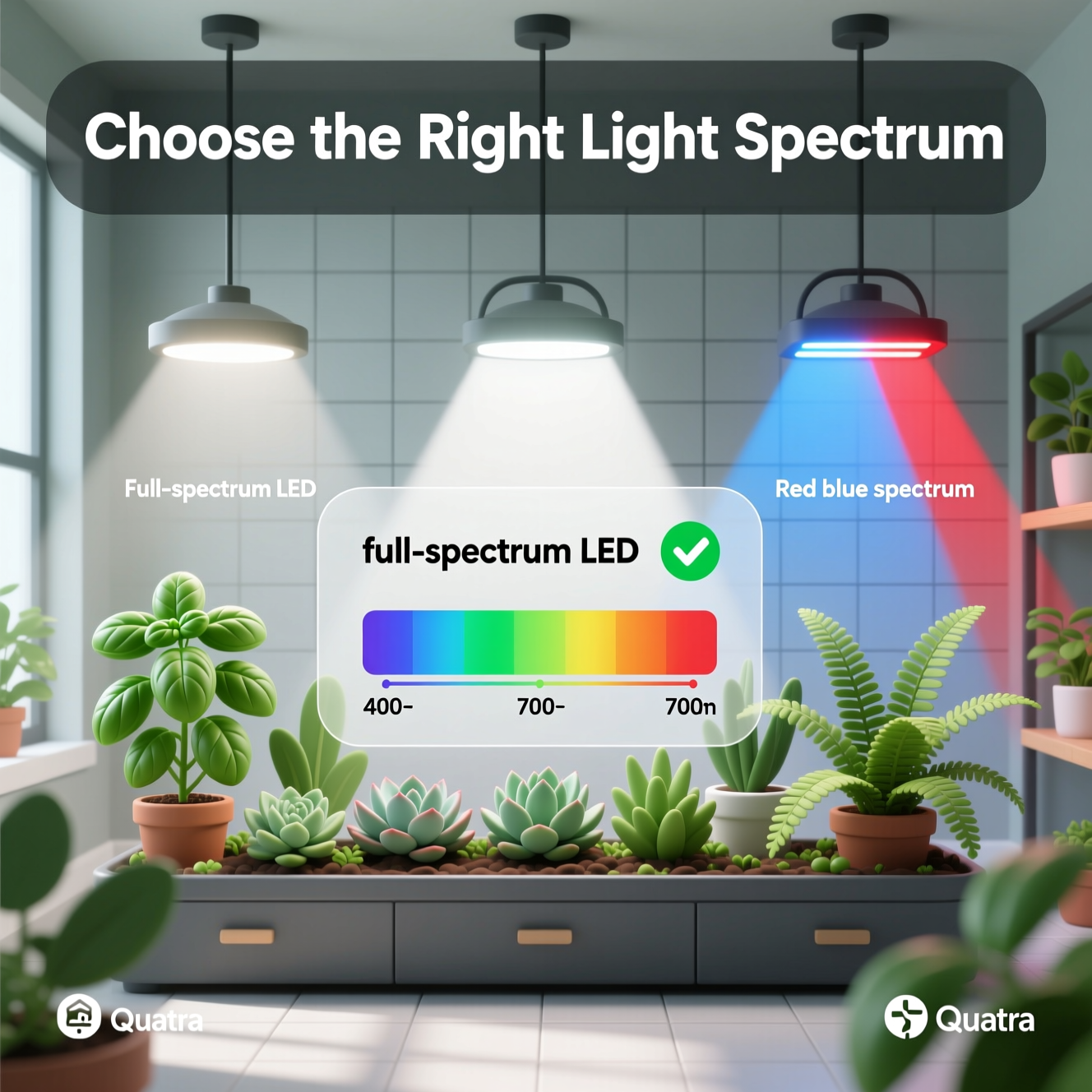Understanding Light Spectrum and Plant Growth
The University of Minnesota Extension emphasizes that light spectrum critically influences plant development. Photosynthetically active radiation (PAR), spanning 400-700 nm, is essential. This specific range stimulates photosynthesis, driving plant energy production. Understanding the spectral quality allows for optimized growth strategies.
Different wavelengths within PAR exert distinct effects. Blue light (400-500 nm) primarily regulates vegetative growth. It also plays a role in stomatal opening, impacting gas exchange. Red light (600-700 nm) is crucial for promoting flowering and fruiting. This occurs through its influence on phytochrome activity, a key photoreceptor. Notably, combining red and blue light can enhance plant growth efficiency by up to 40% compared to white light alone.
These specific light wavelengths contribute to photomorphogenesis, the light-regulated development of plants. Chlorophyll absorption peaks in the blue and red regions. To understand how these specific wavelengths impact your plants, see our guide on how to choose the right light spectrum for indoor gardening. This absorption is fundamental for efficient photosynthesis and overall plant health. For a comprehensive look at optimizing plant growth, delve into our guide on LED grow lights for vegetables, herbs, and seedlings. Mastering plant light absorption through spectrum control ensures vigorous growth and yield.
Mastering plant light absorption through spectrum control ensures vigorous growth and yield, and you can find detailed information on this in our guide to LED grow lights for vegetables, herbs, and seedlings.
Blue Light Spectrum Benefits and Uses
The blue light spectrum plays a crucial role in plant development. It influences key physiological processes, promoting healthy growth. Blue wavelengths are integral to functions like chlorophyll synthesis and phototropism. Recent research highlights its impact on plant structure and regulation, as noted by findings on the effect of the blue spectrum on plants.
This specific light spectrum enhances chlorophyll production and photosynthetic enzyme activity. It stimulates compact plant morphology and healthy leaf expansion. Blue light exposure can increase chlorophyll content by up to 25% in controlled environments. Furthermore, it regulates stomatal opening, influencing gas exchange and transpiration rates, which is vital for plant survival and yield.
In practical terms, understanding the blue wavelength benefits for plants is essential for optimizing growth. This knowledge supports advanced horticultural techniques. As a result, growers can manipulate lighting conditions to achieve desired plant outcomes, ensuring robust development and efficient resource utilization.
Red Light Spectrum Advantages
The red light spectrum plays a critical role in plant development. This specific wavelength range, often around 660 nm, is vital for promoting plant growth and development. It directly influences physiological processes like flowering and seed germination. Modern horticultural practices leverage these effects for enhanced crop production. According to Frontiers in Plant Science, red light activates key photoreceptors such as phytochrome, which is central to these plant responses.
Phytochrome activation by red light is essential for flowering induction and seed germination. This spectral component also boosts assimilate production, thereby increasing plant biomass. For most gardeners, understanding the red wavelength effects can optimize cultivation strategies. Plants under red light have demonstrated up to 30% higher fruit yield in controlled greenhouse studies. This enhancement in fruiting efficiency is a significant benefit for many crop species, demonstrating the power of targeted light spectra.
The Role of Green, Far-Red, and UV Light
Beyond the commonly known spectrum, specific light wavelengths significantly influence plant development. Green light penetrates dense foliage, boosting photosynthesis in lower leaves, a critical factor for overall plant vitality. Additionally, the far-red wavelength regulates shade avoidance responses and flowering time, a nuanced effect studied extensively in plant physiology. This interplay of light ensures optimal growth and development.
Furthermore, UV-B light promotes the production of protective secondary metabolites, enhancing a plant’s natural defense mechanisms against environmental stressors. Recent studies indicate that green light can contribute up to 30% of total photosynthesis in shaded leaves, demonstrating its substantial impact. The far-red wavelength, particularly its ratio with red light, acts as a crucial signal for plant morphology and photoperiodism. This spectral control is vital for understanding plant responses.
In practical terms, manipulating these light spectra offers advanced horticultural control. Ensuring appropriate green light penetration, managing far-red light effects, and understanding UV light plant growth benefits allows for tailored cultivation strategies. These spectral ranges collectively enhance plant health and productivity, leading to improved yields and resilience.

Angelina Everly leads the editorial desk at Live Green Gardens, blending practical plant care, hands-on product testing, and approachable outdoor styling. She focuses on step-by-step how-tos, buyer’s guides, and small-space makeovers that work in real life and real budgets. When she’s not comparing pruning shears or setting up a drip kit, you’ll find her creating cozy corners with planters, solar lights, and pollinator-friendly picks—always with clear pros/cons and safety notes so you can buy once and garden happy.

